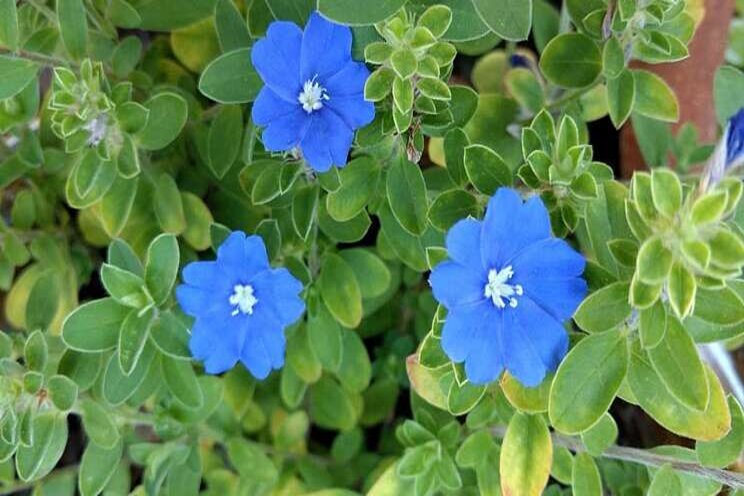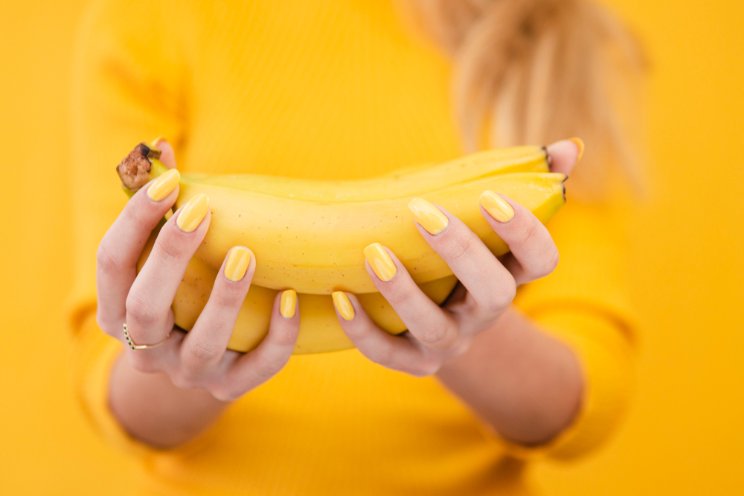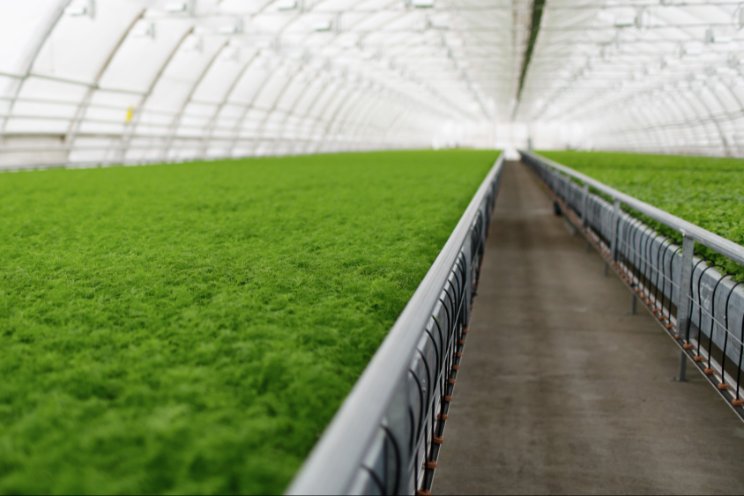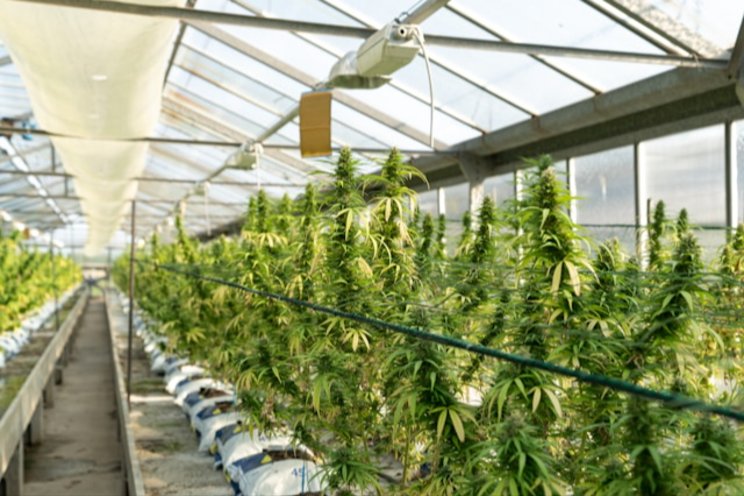Texas Superstar ornamental, blooming plants
Added on 03 June 2020

In 2020 plants recognized as Texas Superstars have included the Tidal Wave Red Velour petunia; the Cupcake, Muffin, and Rio Grande purslane; the Lucky Star Deep Pink penta; and now Blue Daze.
Blue Daze is a tropical plant that grows 9 to 18 inches tall, depending on the selection, and spreads to 36 inches around. The foliage is a gray-green that provides a good background for the small but showy blue flowers which are its main claim to a special status. As testimony to the attractiveness of its flowers, some gardeners call the plant, "Hawaiian Blue Eyes."
I like Blue Daze best grown in a container with a large surface area to show off the blue eyes, but it also works as a summer blooming groundcover for intimate spaces. In addition to being pleasant to look at, the Blue Daze attract butterflies and other pollinators to its blooms as a nectar source.
The key to Blue Daze performance is a full-sun setting and plenty of water. Last winter was exceptionally mild and some Blue Daze survived to sprout again this spring, but usually it only lasts one growing season, unless you shelter it in the winter in a greenhouse.
In 2019 butterfly vine was designated a Texas Superstar. The vine gets its name because its seed pods are the size and shape of butterflies. The pods start out green and then turn brown as they mature. Area horticulturist David Rodriguez reports that the pods have long been used as a raw material for butterfly-based crafts.
As distinctive as the pods are, the yellow blooms and the evergreen foliage also are an important part of the plants appeal for area landscapes. Pollinators including butterflies and hummingbirds use the summer blooming flowers as a nectar source.
The butterfly vine is tame enough to grow in a container against a trellis or arbor on a patio. The shiny green foliage, yellow flowers, and butterfly shaped seedpods make it an interesting and attractive addition for visitors to admire.
But it is aggressive enough to serve as a hedge to block an unpleasant view when grown on a fence. Expect a plant to grow upward to 15 feet and to cover the same horizontal area. Most winters the vine is evergreen.
Grow butterfly vine in full sun. Deer do not eat the vine in most neighborhoods.
Another past-named Texas Superstar to consider for the landscape this summer is the Cora vinca. Up until Cora became available on the market, it was a waste of time to plant a vinca/periwinkle before mid-summer because with the first rain during cool temperatures, it would melt down from aerial phytophthora.
Source and Photo Courtesy of Express News
Source: Express News
More news















